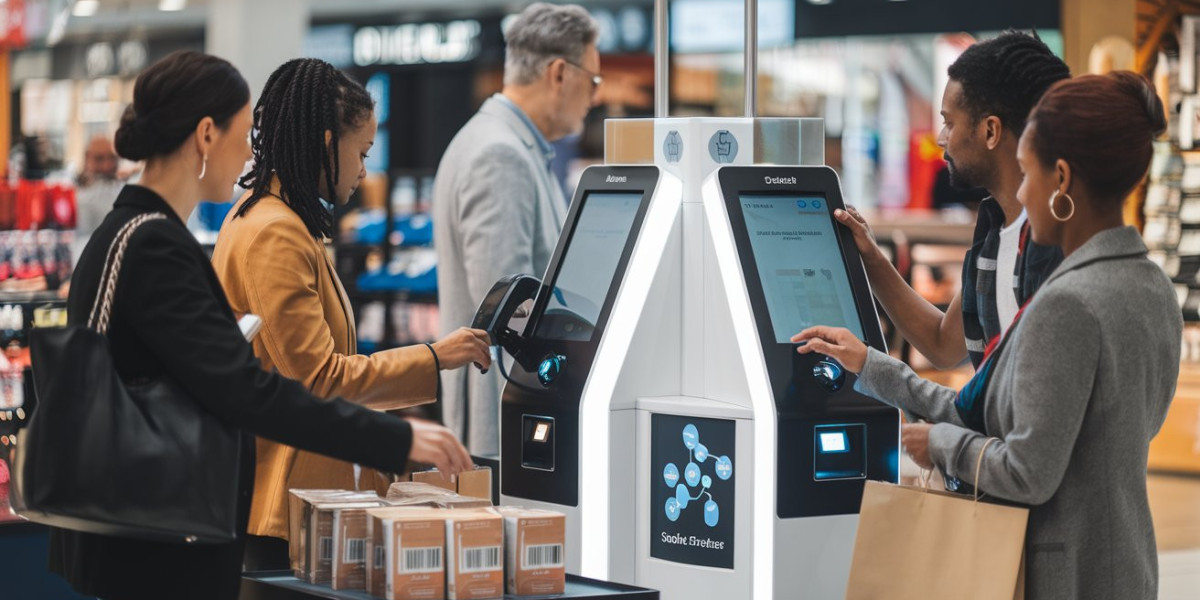Self-service kiosk machines have transformed the way businesses and consumers interact, evolving from simple information dispensers to sophisticated systems capable of handling complex transactions. These kiosks have become ubiquitous in various sectors, ranging from retail and hospitality to healthcare and banking, offering unparalleled convenience and efficiency. This evolution has been driven by technological advancements, changing consumer expectations, and the need for businesses to streamline operations while enhancing customer experiences. This blog explores the journey of self-service kiosk machines, highlighting key milestones and their impact on different industries.
The Early Days: Information Dispensation
The origins of self-service kiosks can be traced back to the early 1970s when the first automated teller machines (ATMs) were introduced. These machines were designed to dispense cash and provide basic account information, offering a new level of convenience for bank customers. Around the same time, other simple kiosks began appearing in public spaces, primarily providing information or directions. These early kiosks were limited in functionality, often consisting of a basic screen and a few buttons, and were largely seen as supplementary tools rather than essential business components.
During this period, the primary focus of self-service kiosks was to reduce the workload of human attendants and provide customers with quick access to information. For example, in airports, early kiosks were used to display flight information, helping travelers navigate terminals more efficiently. These machines were rudimentary by today’s standards, but they laid the groundwork for the more advanced systems that would follow.
The 1990s: Introduction of Transactional Capabilities
The 1990s marked a significant turning point in the evolution of self-service kiosks, as they began to incorporate transactional capabilities. This era saw the introduction of kiosks that could handle a variety of tasks, such as ticket purchasing, bill payments, and even food ordering. The expansion of the internet and advancements in software development played a crucial role in enabling these more complex functions.
One of the most notable developments during this time was the introduction of airline check-in kiosks. These machines allowed passengers to check in for flights, select seats, and print boarding passes, significantly reducing wait times and streamlining the check-in process. Similarly, in the retail sector, self-service kiosks began to emerge as a tool for price checking and product information, gradually expanding to include functions like gift registry management and even self-checkout.
This period also saw the integration of touchscreen technology, which made kiosks more user-friendly and accessible. Touchscreens replaced the need for physical buttons and keyboards, allowing for a more intuitive interaction that mimicked the experience of using personal computers. This change was instrumental in making kiosks more appealing to a broader audience, setting the stage for their widespread adoption in the coming years.
The 2000s: Expansion into New Industries
The early 2000s saw self-service kiosks expand into new industries, driven by the growing demand for convenience and the need to improve operational efficiency. In the healthcare sector, kiosks began to appear in hospitals and clinics, allowing patients to check in for appointments, update their medical information, and even pay bills. These machines helped to reduce the administrative burden on staff and improved the patient experience by shortening wait times and minimizing paperwork.
The retail industry also saw significant advancements, with self-service kiosks becoming a common feature in stores. Self-checkout kiosks, in particular, gained popularity, allowing customers to scan and bag their items, process payments, and complete transactions without the need for cashier assistance. This not only reduced labor costs for retailers but also gave customers greater control over their shopping experience.
In the fast-food industry, kiosks began to revolutionize the way orders were placed. Major chains like McDonald’s introduced self-service ordering kiosks, enabling customers to customize their meals, view nutritional information, and pay without interacting with a cashier. This innovation not only sped up the ordering process but also improved accuracy, as customers could review their orders before finalizing them.
The 2010s: Integration with Mobile Technology and AI
The 2010s brought about a new wave of innovation in self-service kiosks, characterized by the integration of mobile technology and artificial intelligence (AI). As smartphones became ubiquitous, kiosks began to incorporate features that allowed users to interact with them through their mobile devices. For example, some kiosks enabled customers to place orders or make payments using mobile apps, which could then be completed at the kiosk itself. This seamless integration between mobile and kiosk technology provided a more convenient and personalized experience for users.
AI also began to play a significant role in the evolution of kiosks, enabling more sophisticated interactions and decision-making processes. For instance, AI-powered kiosks in retail environments could analyze customer preferences and offer personalized product recommendations. In the healthcare industry, AI-driven kiosks were used to triage patients by asking them a series of questions and determining the urgency of their condition before they saw a healthcare provider.
Facial recognition technology and biometric authentication also started to emerge in kiosk design, enhancing security and enabling more personalized services. For example, in banking, some ATMs and kiosks began using facial recognition to authenticate users, offering a more secure and efficient way to access financial services.
The 2020s and Beyond: Toward a Fully Automated Future
As we move into the 2020s, self-service kiosks are becoming even more advanced, with the potential to handle increasingly complex transactions across various industries. The COVID-19 pandemic accelerated the adoption of contactless technology, making kiosks an essential tool for businesses looking to minimize physical interactions and ensure safety. Touchless kiosks, which can be operated using gestures or voice commands, have started to gain traction, offering a safer and more hygienic option for users.
In addition to expanding their capabilities, kiosks are becoming more integrated into the broader digital ecosystem. For example, kiosks in smart cities are being connected to other systems, such as public transportation networks and municipal services, creating a more cohesive and efficient urban environment. These interconnected kiosks can provide real-time information, enable transactions, and even offer targeted advertising based on user data.
Moreover, as AI continues to evolve, kiosks will likely become even more personalized, capable of anticipating user needs and providing tailored solutions. In the retail industry, for example, kiosks could analyze shopping patterns and offer product suggestions or discounts based on individual preferences. In healthcare, AI-driven kiosks could provide more accurate and timely diagnoses, improving patient outcomes.
The rise of 5G technology will also play a crucial role in the future of self-service kiosks, enabling faster and more reliable connections. This will allow kiosks to process transactions more quickly, offer real-time updates, and support more complex interactions, further enhancing the user experience.
Conclusion
The evolution of self-service kiosk machines from basic information dispensers to complex transactional systems reflects the broader trends in technology and consumer behavior. As these machines continue to advance, they are poised to become an even more integral part of our daily lives, offering greater convenience, efficiency, and personalization. Businesses that embrace these innovations will be well-positioned to meet the demands of modern consumers and thrive in an increasingly digital world.








